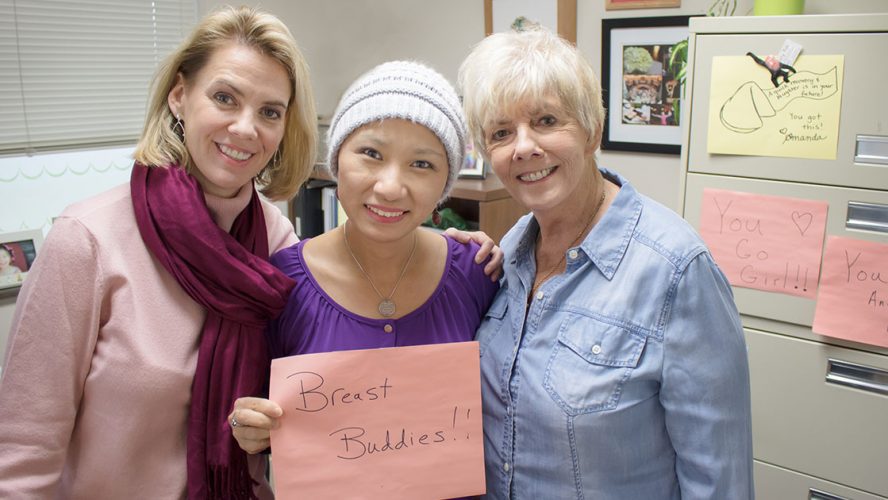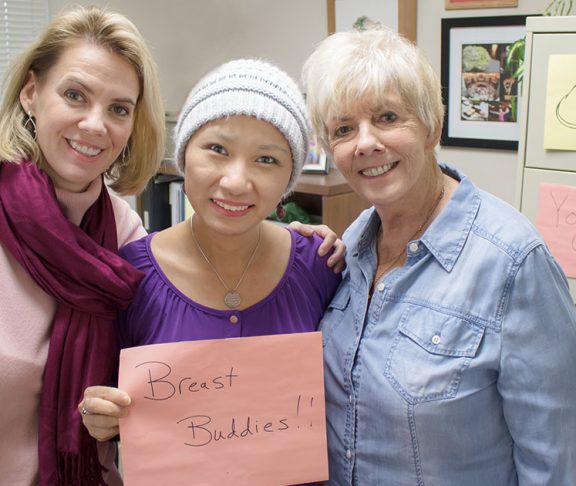Just ask Sue Ann Thompson, Tommi Thompson and Emily Sullivan — colleagues of mine who have all heard those three dreaded words: “You have cancer.” They call themselves the “Breast Buddies,” and while it’s a club that none of them wanted to be a part of, they have all embraced it as an opportunity to share with other women what they have learned from their own experiences.
“I knew I needed to figure out how to use my diagnosis as a way to educate women about breast cancer,” said Tommi. “I want to help women feel empowered to take control of their health.”
“Early detection is so important,” added Emily. “I want women to see my story and to be able to learn from it.”
Get educated
According to the American Cancer Society, the average woman has at least a 13 percent chance of developing breast cancer in her lifetime, but that’s just the baseline. Age, family history of breast cancer, personal history of cancer, and lifestyle choices can increase that number. Everything from having children to using hormone replacement therapy, your weight, and the amount of alcohol you drink, can impact risk. In the case of the Breast Buddies, two had a family history of breast cancer and one did not. One was over the age of 50, the others were 35 or younger at diagnosis. Their pregnancy and motherhood experiences were different. And some risk factors, like mutated CHEK2 and BRCA 1 genes, were still to be discovered.
The bottom line is that everyone’s risk factors are different and unique. Each one of us needs to be a detective to identify what we’re personally up against, and what we can do about it.
Trust yourself
Something all three women did have in common was that they knew their bodies, noticed when something was off, and then pushed for answers, sometimes, contrary to “standard protocol.” When it comes to your health, you are your own best advocate. Be aware of the warning signs for breast cancer, such as a new lump, bump, thickness, dimple, breast shape, nipple change, or skin change. And if you do notice something, speak up and find a healthcare provider who will listen.
Be proactive
When it comes to any cancer, early detection is the best protection. The National Cancer Institute says that breast cancer survival is greatest when it’s caught in its earliest stage, so mammograms are recommended as a way to screen for cancer before you would even notice any symptoms. In general, a woman should start having mammograms between the ages of 40 and 50, though recommendations do vary, so have a conversation with your healthcare provider. A mammogram may not be your only option, and your risk factors will determine exactly when and how to be screened.
It can be confusing to navigate, but it really all goes back to knowing your unique risk factors, knowing your body, and advocating for yourself. For instance, breast self-exams may no longer be recommended, but that is the way two of the “Breast Buddies” found their cancer. Once, the standard for mammograms was two pictures of each breast. Now you can learn more about three dimensional, or 3D mammography.
Together, you and your healthcare provider can come up with an individualized screening (and possible risk reduction) plan that’s tailored to you, weighs the pros and cons, helps you feel assured, and helps you feel protected.

